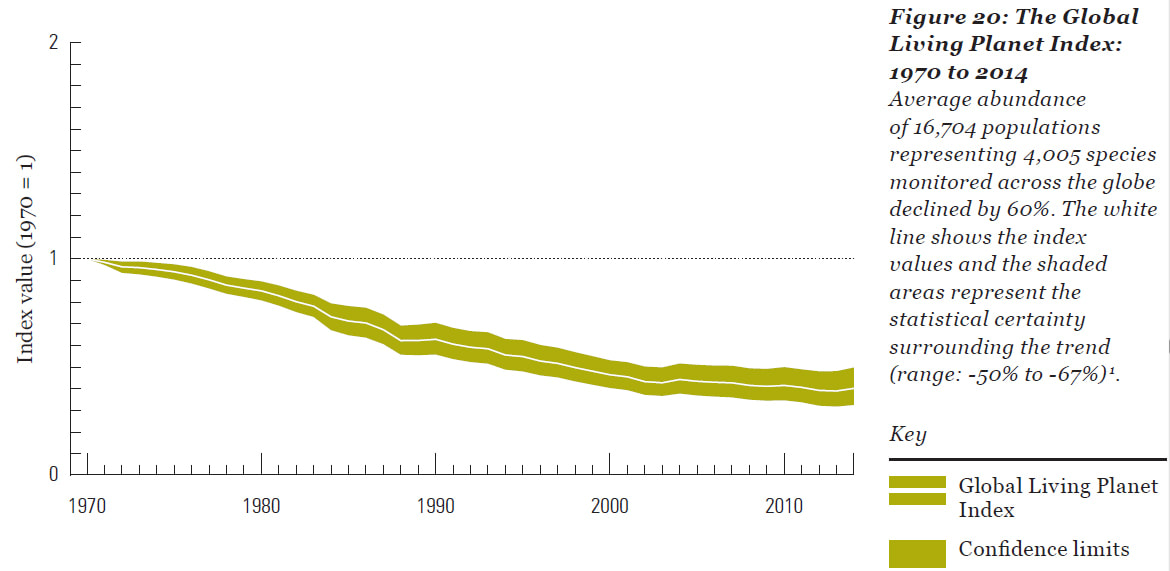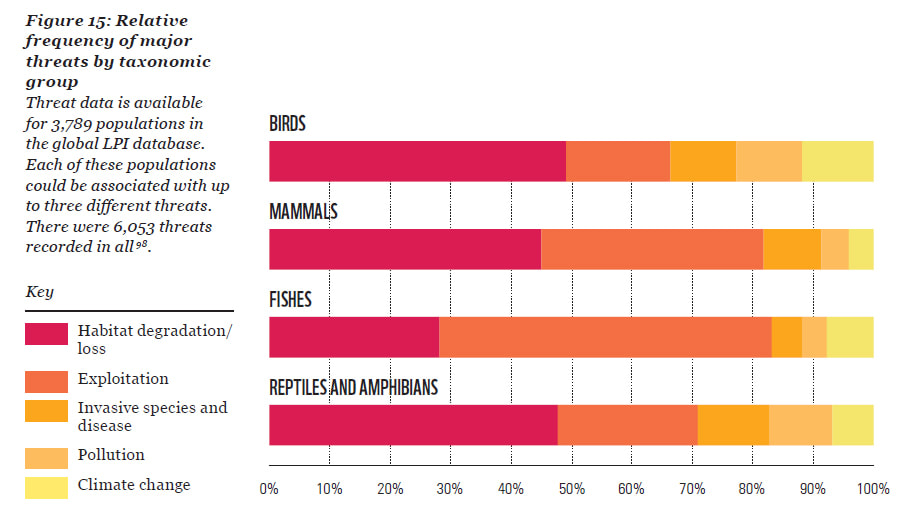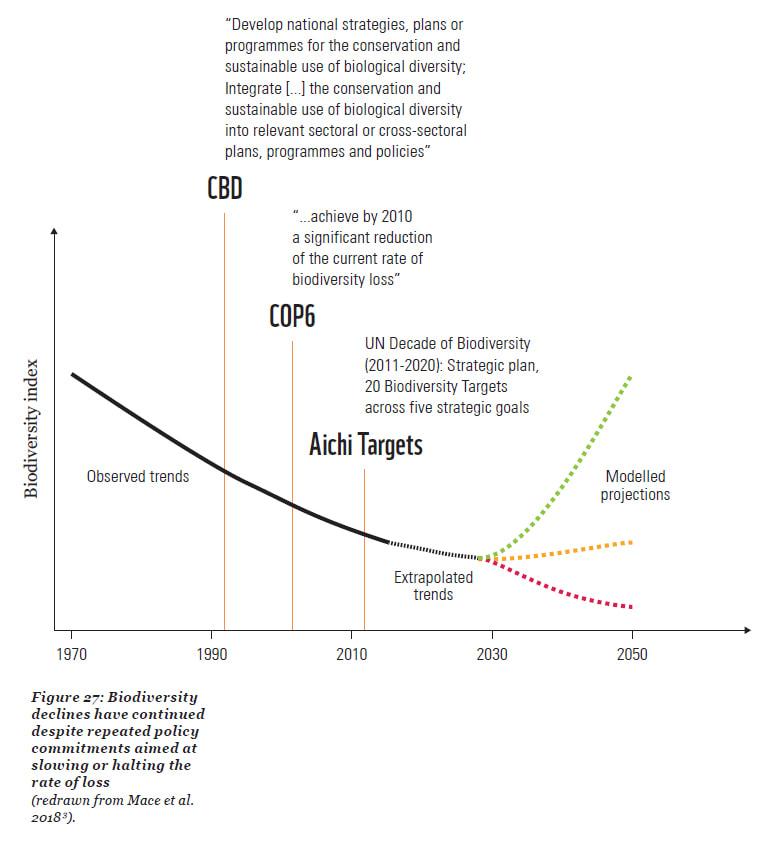|
At the end of 2018, WWF published their twelfth, bi-annual report on the status of biodiversity, highlighting the importance of global conservation efforts - the living planet report. Their message is clear: unsustainable human activity is pushing the planet’s natural systems that support life on Earth to the edge. In the 1950s, the Great Acceleration began to dramatically increase the global human population by improving our quality of life, leading to an increase in the demand for energy, land, water, and increasing overall consumption. The products we consume, the supply chains behind them, the raw materials and export routes we use all have a significant impact on the environment. Scientists now claim that the Holocene period has ended and we entered a new era, the “Anthropocene”.
The index shows a general decline of 60% in population sizes from 1970- 2014 (Fig 20). The decline is especially evident in the tropics, with South and Central America experiencing a dramatic decline of 89% in population sizes since 1970. Freshwater species have also declined dramatically; 83% since 1970. Measuring biodiversity on Earth is complex, so this report also examines three other indicators, measuring changes in species distribution, extinction risks and changes in community composition. All of these draw the same picture - showing sharp drops or changes. The report listed habitat degradation, unsustainable exploitation of resources, invasive species and climate change as the main causes of the declines in biodiversity we see today (Figure 15). This latest assessment found that only one quarter of the earth is not currently being exploited by man. In the marine system, 6 million tons of fish have been removed from the oceans since the 1950s. Plastic is now found in all marine systems, from the coasts to the depths, with an estimate of between 4.8 to 12.7 million tonnes of land-based plastic waste entering the ocean in 2010 alone.
The report stresses that achieving this ambitious goal will require changes that come from governments, businesses, research, civil society as well as from personal choices and actions. The window of opportunity must be exploited in order to change the trajectory of biodiversity trends, by defining new targets for beyond 2020 and developing sustainable industries.
12/11/2022 01:00:16
Short pretty bit. Various vote will leave long.
Reply
Leave a Reply. |
News published regularly in the ISCB newsletter. Maintained by Leigh Kroeger and Uri Roll Archives
May 2019
Categories
All
|
Proudly powered by Weebly



 RSS Feed
RSS Feed